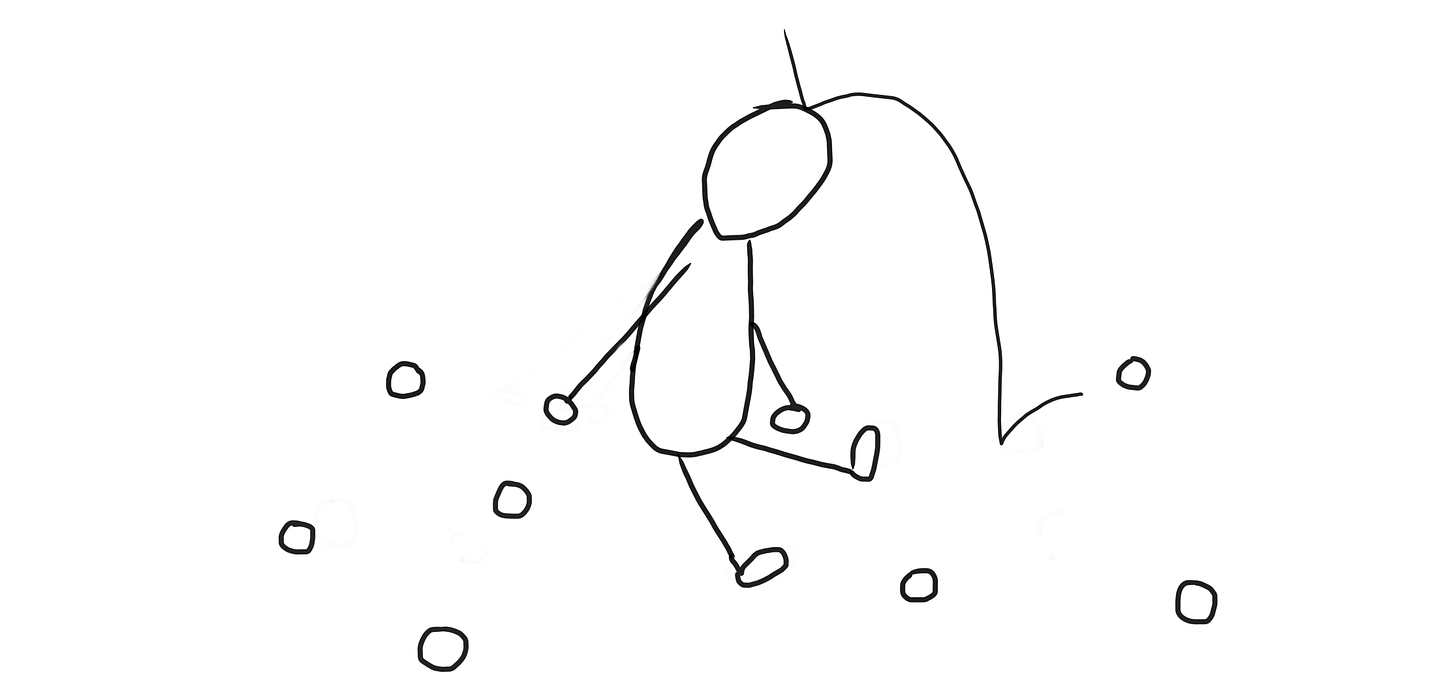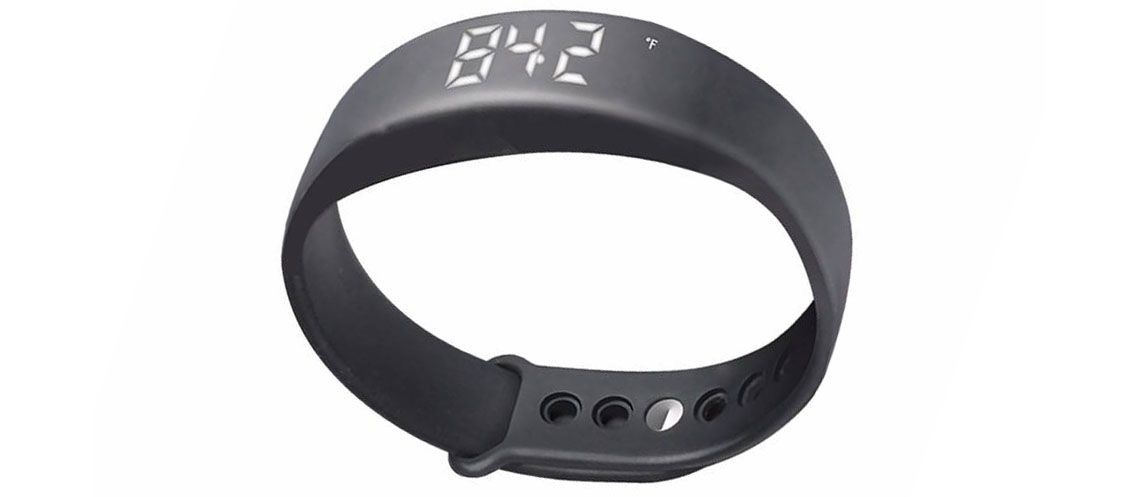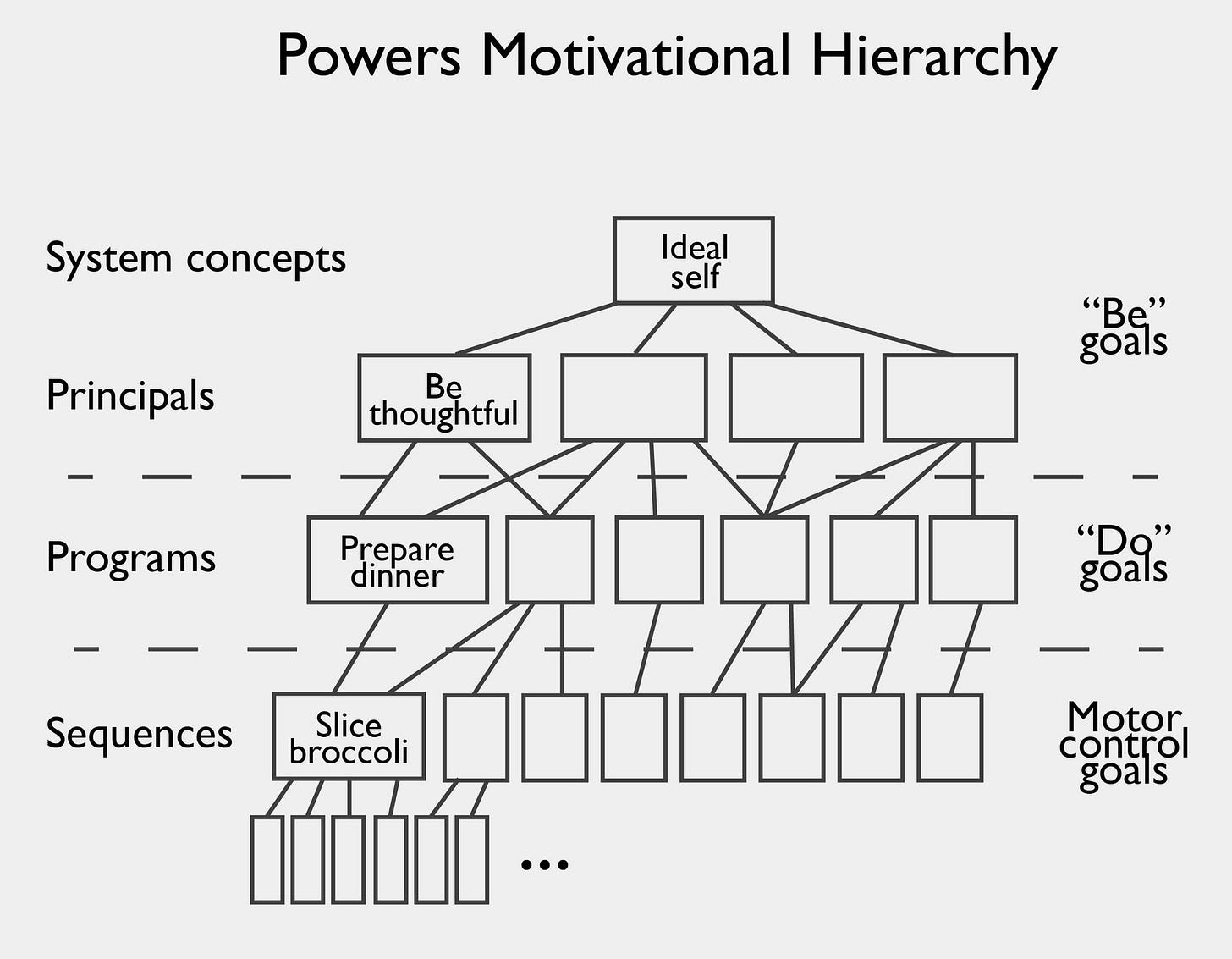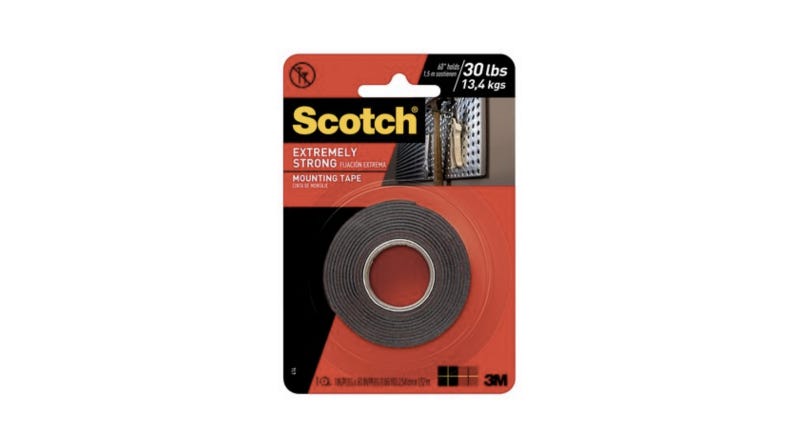Leveling up in product with the Jobs Tree
A comprehensive overview of the art of product.
In my previous post on the struggle of being a PM I showed that in most organisations Product Management is broken.
The top 2 problems that PMs experience?
🏭 A lack of influence over the product strategy. In a Feature factory.
😓 Overwhelmed by competing and shifting priorities.
Research showed these problems are industry-wide and frustrating.
PMs are eager to solve them but don't know how.
In this second part I attack these problems by creating a contrast between the Overwhelmed PM and the Focused PM. This contrast reveals that the Focused PM doesn't work more hours, but they apply their time more effectively. They do this by leveling up. Leveling up is probably the most important concept in product.
It explains how to create focus & deliver breakthrough innovation by seeing the bigger picture. And I'm about to explain it to you.
Overwhelmed PM versus Focused PM
Imagine two PMs at opposite ends of the spectrum:
The Overwhelmed PM versus the Focused PM.
The Overwhelmed PM has the problems from our research.
These PMs feel they lack influence on the product strategy. Managing feature requests from a visionary CEO or sales is a constant struggle. They are stressed and overwhelmed by competing and shifting priorities.
The Focused PM makes the job look easy. They are calm, confident, and focused on the things that matter. They solve their problems with style and a smile on their face. They make an exceptional impact by building products people love.
So what sets these PMs apart? Does the Focused PM work harder? Is it a matter of throwing more hours down the pit? Hint: It's not. The PMs I coach often work extra hours (and sometimes weekends) and are still overwhelmed. So if more time isn't the answer, then what is?
The Focused PM applies their energy in a different place.
If the Overwhelmed PM scatters their energy like a flashlight in the dark, the Focused PM points it like a laser. The Focused PM makes decisions that enable them to focus. It's no coincidence that the verb decide comes from the ancient Latin decidere. which translates to "cut off". Because to cut off options, is the essence of focus.
Let's break it down.
Juggling too many ideas
This is what the typical PM encounters on the job.
Raw ideas flow in from different sources and stakeholders. Some ideas seem more urgent than others, but it's hard to tell without investigation. Most PMs dutifully write them down. With a reassuring nod, they speak the words, "It's in the backlog". Yet these are words of false comfort and leave the PM with a guilty taste. Deep inside, they know the backlog is where ideas get lost.
Some PMs try to juggle all these ideas.
To create a sense of order, they use ranking algorithms (like RICE).
But as the backlog grows, even the most persistent PM's realize it's futile.
Nobody can keep these ideas in their head, let alone investigate and rank them.
This is when backlog bankruptcy is declared. The slate is wiped clean.
Only for the same Sisyphean ordeal to begin all over again.
It's not a surprise many PMs feel overwhelmed. Nobody can juggle 100 balls, not even the world record holder (16 balls, I looked it up).
Which can we drop?
Leveling up
The first step is to realize ideas come in different types:
Opportunity: Unsolved problem, or unmet need.
Solution: Feature idea or request.
These types have a relationship: A solution is a response to an opportunity.
Example: If "wanting to drill a hole" is the opportunity, then "a drill bit" might be a solution.
This relationship is not optional. A solution without an opportunity is like making a random key and hoping it will fit a lock. It doesn't make sense.
Even though solutions without an opportunity make no sense, they are common in practice.
We, our users or colleagues come up with features all the time. This is normal. It is human to think in solutions. But we have to take these suggestions with a grain of salt. People are not good at predicting their own behavior.
“It’s not the customer’s job to know what they want.”
- Steve Jobs
Our job as innovators is to figure out the opportunity, the motivation, behind feature requests and then invent on behalf of the user. This isn't because users aren't smart. They simply don't have access to the knowledge, skills or resources to innovate effectively.
It boils down to this: you aren’t allowed to tell them what their problem is, and in return, they aren’t allowed to tell you what to build. They own the problem, you own the solution.
Rob Fitzpatrick - The Mom Test
To figure out the opportunity behind a feature request we take a step back and ask "why?". This enables us to level up to a bigger context. Level up by asking "why?".
If we ask why to a proposed solution we discover the opportunity. Based on this opportunity, we can invent new solutions and group feature requests. This forms the beginning of a tree structure:
Leveling up doesn't stop here.
Keep asking why to level up to an even bigger context.
Conversely, ask how to level down.
The higher we climb, the more aspirational the opportunities become (to the point of getting metaphysical).
Leveling up too many times on the bigger context can quickly get meta-physical quickly where you start questioning the meaning of life. But most innovators don’t level up at all.
- Ash Maurya
So where do we stop our inquiry?
The Customer Job
We continue asking why until the opportunity that we reach is an end rather than a means. A real goal instead of an intermediary goal:
Harvard professor Theodore Levitt once pointed out, “People don’t want to buy a quarter-inch drill. They want a quarter-inch hole!”
However, Levitt’s implication that the goal is really a hole is only partially correct. When people go to a store to buy a drill, that is not their real goal. But why would anyone want a quarter-inch hole? Clearly that is an intermediate goal. Perhaps they wanted to hang shelves on the wall.
Levitt stopped too soon.
Once you realize that they don’t really want the drill, you realize that perhaps they don’t really want the hole either: they want to install their bookshelves. Why not develop methods that don’t require holes? Or perhaps books that don’t require bookshelves. (Yes, I know: electronic books, e-books.)
Don Norman - The design of everyday things
Such a real goal is called a Job To Be Done (or a Customer Job). A Customer Job is the progress that a consumer wants to make in their life:
A Job to be Done is the process a consumer goes through whenever she aims to transform her existing life-situation into a preferred one, but cannot because there are constraints that stop her.
Alan Klement - When Coffee Meets Kale
The illustration below shows the difference between a Customer Job (on the left), and intermediary (functional) goals on the right.
Sure, the material used for the wheels matters (intermediary & functional goal), but only so much as it helps the user be impressive on their skateboard (the Customer Job). The Customer Job is what users evaluate your product against. It is their yardstick. This is why we level up until the Customer Job. Any innovator that wants to make something of value should understand this.
A comparison to Toyota's five why technique
This analysis is strikingly similar to Toyota's five why technique:
The primary goal of the technique is to determine the root cause of a defect or problem by repeating the question "Why?". Each answer forms the basis of the next question. The "five" in the name derives from an anecdotal observation on the number of iterations needed to resolve the problem.
The technique was originally developed by Sakichi Toyoda in the early 1900s and was used within the Toyota Motor Corporation during the evolution of its manufacturing methodologies.
Five why's - Wikipedia
There are 2 things we can learn from the five why technique:
Asking why should be with "Gemba attitude"
A product can serve multiple Customer Jobs
Let's get into it.
1. Asking why should be with "Gemba attitude"
Both Jobs To Be Done Theory as well as Toyota's five why technique, emphasize doing the analysis at the place where the problem occurs. We can't just ask "why" a couple of times and speculate about the problem. We should talk with the user to find out. At Toyota this principle is called "Genchi Genbutsu" which literally translates to "real location, real thing”.
Taiichi Ohno, creator of the Toyota Production System is credited, perhaps apocryphally, with taking new graduates to the shopfloor and drawing a chalk circle on the floor. The graduate would be told to stand in the circle, observe and note what he saw. When Ohno returned he would check; if the graduate had not seen enough he would be asked to keep observing. Ohno was trying to imprint upon his future engineers that the only way to truly understand what happens on the shop floor was to go there. It was where the value was added and waste could be observed.
Genchi Genbutsu is, therefore, a key approach in problem-solving. If the problem exists on the shop floor then it needs to be understood and solved at the shop floor.
Genchi Genbutsu is also called Gemba attitude. Gemba is the Japanese term for "the place" in this case "the place where it actually happens".
Wikipedia - Genchi Genbutsu
So when you ask "why" to level up, it should be by talking with users (with Gemba attitude). At the end of this article, I share my favorite resources that explain how to interview users and discover Customer Jobs.
2. A product can serve multiple Customer Jobs
One of the criticisms on Toyota's five why technique is:
"A tendency to isolate a single root cause, whereas each question could elicit many different root causes."
Let's avoid this mistake by being clear: A product can fulfill more than one Customer Job. There can be multiple Customer Jobs at the root of our tree:
It's like how plants grow conjoined if their tissue is touching (this is called inosculation).
This is not uncommon. Products often have multiple usecases without the designers being aware of them. A personal example that involves a "Pee Watch":
I'm a father of two young children. The only time I get any writing done is early in the morning, so I set the alarm on my phone. However, my wife wakes up at the sound of this alarm and can't fall asleep anymore.
So what to do?
After browsing a while, I found a wristband that buzzes my wrist at a predetermined time. Ideal for my Customer Job. I get to wake up, and she doesn't. The funny part? These watches are meant for children or the elderly to remind them to pee or take their medicine. They are literally called "Pee Watches" on the Dutch website.
I'm pretty sure the designers of these watches have no idea their product is used for a Customer Job so different from what they imagined. I guess there are more parents that want to rise early without waking their partner. Could this product tap a whole new market if focused specifically on this Customer Job?
This shows that features that are designed for one Customer Job, can (un)intentionally serve another. In the case above, the buzzing alarm functionality serves my Customer job of helping me find time for creative expression. Some of the other features like the ability to set 7 alarms throughout the day complicate the watch interface for me. They are essential for letting a child know when to pee, but I don't need them for my Job:
Companies often aim to increase their reach by serving more Customer Jobs with the same product. The illustration above shows why this is risky. With more features the product becomes less specifically attuned to each Customer Job.
Like a swiss knife, they become OK at everything but great at nothing.
This is how many startups beat incumbents. They unbundle a Customer Job that isn't served specifically enough. Rather than a swiss knife, they forge a sword that cuts to the essence of what a customer wants to get done. As an example: In a recent article, Greg Isenberg explains how to unbundle a Reddit community:
... each community has to conform to the one-size-fits-all mold of a subreddit. One size fits all, but it doesn't fit anyone particularly well. That creates unbundling opportunities.
There are hundreds of wonderful startups waiting to be built using this simple strategy: create a product that serves the unmet needs of an individual subreddit.
Greg Isenberg - The Ultimate Guide to Unbundling Reddit
Does your product serve more than one Customer Job? Think carefully about each Job that you serve. Consider if a Customer Job wouldn't be better off in a separate product. Alternatively, you could drop Customer Jobs to increase the focus of your product.
The Jobs Tree
Voila! Out of a mess of raw ideas, a tree structure has emerged.
I call this a Jobs Tree (after Jobs To Be Done theory). This Jobs Tree is likely to have multiple Customer Jobs at the top which are revealed by talking with users.
This Jobs tree is strikingly similar to William Powers’ hierarchy of goals where the Principals are like our Customer Jobs:
"William Powers’ hierarchy of goals is a widely accepted model of the relationship between the things we do, and why we do them."
Alan Klement - When Coffee and Kale compete
Powers' hierarchy illustrates how the higher we level up, the more aspirational our goals become, with the Ideal self at the top (or root) of the tree:
"Your ideal self is a synthesis of various Principles or “Be” goals. For example, you think of yourself as a particular type of parent or friend and having a particular set of personal freedoms. These Be goals are what motivate you to choose and carry out one or more Programs or “Do” goals. These Do goals are then fulfilled by Sequences or Motor control goals"
Alan Klement - When Coffee and Kale compete
Besides giving the Jobs Tree credibility, Power's hierarchy confirms that leveling up to "Be" goals (or Customer Jobs) helps to understand the motivation behind functional (Motor control) goals. This further shows that leveling up is key for any innovator. But how key really? What is the power of leveling up?
The power of leveling up
Leveling up gives three advantages:
Create focus by enabling strategic decisions
Deliver breakthrough innovation by seeing the bigger picture
Establish a stable foundation by researching the timeless
Let's break it down.
1. Create focus by enabling strategic decisions
When we have to decide on a course of action, the Jobs Tree enables us to make strategic choices before diving into the details. This starts at the Customer Job level. First, we choose a Job to focus on:
Can you see how this reduces scope? We just cut off an entire branch of concerns. Next step: which opportunity under this Customer Job can we prioritise?
And this goes on. Like a traveler that makes a turn at each crossroads, we decide every level we go down. Which of the opportunities serve the Customer Job and the business best? And after that?
In moving from the top to the bottom, we progress from the strategic to the functional. The higher we level up, the broader the strokes of our brush. Like how an artist paints the large areas of the canvas before its details, we optimize for the global maximum before doing so locally. We decide. That's the essence focus.
Note: This explains why the top 2 problems (at the beginning of this article) PMs face are two sides of the same coin. When PM's feel they lack 1. Influence they can't apply focus to the product strategy (at the root of the tree). As a result, they need to consider all possible branches, and this is 2.Overwhelming.
2. Deliver breakthrough innovation by seeing the bigger picture
Most never rise above the functional. Only by leveling up to the Customer Job do we learn what customers really want. And this is essential:
"You’ve got to start with the customer experience and work backwards to the technology. You can’t start with the technology then try to figure out where to sell it."
Steve Jobs - 1997 Apple WDC
The bigger the context that we solve the more value we create for users.
Power's hierarchy reflects this:
Be goals have the highest priority; Motor control goals have the lowest. Be goals are the core drivers of all our actions and decisions. This also means that, no matter how well a Do or Motor Control goal is fulfilled, it’s a failure if the higher Be goal is not satisfied. It also means that a Do goal doesn’t have to be successfully executed to fulfill a Be goal.
So we should always measure the progress we make on the Customer Job.
It's the only thing users care about.
Upgrade your user, not your product. Don’t build better cameras—build better photographers.
—Kathy Sierra
So how does this look in practice? These examples copied from Ash Maurya's article on Job-To-Be-Done, show how you could approach innovation differently when leveling up.
If you are a drill manufacturer, you might be inclined to focus on building better drill bits that don’t break:
If you are 3M, you might build strong mounting tape that eliminates the need for drilling altogether:
If you are Samsung, you might sell more flatscreen displays that replace artwork on walls:
Pretty cool right? Rather than staying stuck in the mud of the functional, leveling up helps us see the bigger picture, so that we address Customer Job in novel ways.
This is the key to breakthrough innovation.
3. Establish a stable foundation by researching the timeless
The closer to the root of the Jobs tree, the more stable our opportunities are.
It's like how the wind shakes the branches of a tree, but merely grazes the stem.
A feature can change overnight, but a Job remains stable for thousands of years.
Example: "Expressing yourself through art" is as old as mankind, but drilling a hole in the wall can be replaced by a new solution any moment.
Power's hierarchy of goals reflects this:
Be goals are the most stable; Do and Motor control goals are transitory. Be goals are states of self-perception. They are entirely emotional (or psychological if you prefer that word). Do and Motor control goals are purely functional and are technology dependent. They are things you do to fulfill a Be goal. Stated another way: You don’t ultimately want to achieve the Do and Motor goals; you want the Be goals.
Alan Klement - When Coffee competes with Kale
This shows research higher in the tree is more timeless. By leveling up, we establish a foundation that lasts. Knowledge about Customer Jobs is a bedrock on which we can build our castle.
Leveling up: Our ladder to the stars
At the start of this article, we aimed to discover the difference between the Overwhelmed PM and the Focused PM. We learned it's not a difference of energy, it's where this energy is applied. Where the Overwhelmed PM considers all ideas, The Focused PM levels up to the bigger context.
We visualised leveling up with the Jobs Tree. We learned that the Jobs Tree can have multiple Customer Jobs at the root and these are uncovered (with Gemba attitude) by talking with users .
Leveling up is powerful because it enables us to:
Create focus by enabling strategic decisions
Deliver breakthrough innovation by seeing the bigger picture
Establish a stable foundation by researching the timeless
That's it. Leveling up. Arguably, the most important concept in product.
The thread that binds great innovators across the ages.
The wings that elevate our craft into a form of art. Where the sculptor chisels away marble to uncover a statue, we ask "why?" to discover the Customer Job.
"Every block of stone has a statue inside it and it is the task of the sculptor to discover it.”
- Michelangelo
To me, this makes leveling up not just a powerful concept,
it is our ladder to the stars.
And you have your choices
And these are what make man great
His ladder to the stars
Mumford & Sons - Timshel
Acknowledgements & Resources
Opportunity Solution Tree - Teresa Torres
The Jobs Tree is partly inspired by Teresa Torres' Opportunity Solution Tree (OST). I owe a lot of credit to her work. I recommend subscribing to Product Talk, and getting her upcoming book (which I'm sure will be excellent).
Key differences between the OST and the Jobs tree:
The OST has a "Desired Outcome" at the top.
The desired outcome in the OST is a measurable outcome, that combines business and user goals (like OKRs). This desired outcome will act as a sort of filter for the opportunities below. The Jobs Tree on the other hand always has the Customer Jobs at its root. It's a pure reflection of the hierarchy of user goals, and nothing else. I feel many organizations focus too much on things other than a qualitative understanding of the customer, so I wanted to keep the Jobs tree purely about the Customer, and nothing else.The Jobs Tree integrates JTBD explicitly as a core principle
Recommended Jobs To Be Done resources:
When Coffee and Kale compete - Alan Klement
Competing against Luck - Clayton Christensen
Demand-Side sales 101 - Bob Moesta
The Mom Test - Rob Fitzpatrick
Keep digging - Ryan Singer
What is a Job-To-Be-Done - Ash Maurya





























Thanks a lot for writting this article. I really like this way of thinking about structuring the opportunity / solution space.
I am curious though how you manage to express this tree in an operational way, ie.
- what tool or system do you use for expressing this? My grief with many attempts of creating this, is that if done in canvas tools like Miro or Figjam, it quickly gets decoupled from where all the 'meat' of each job-opportunity and solution is captured, so practically have you found a good way to overcome this with a specific product or set of tools combined?
- how do you see this job tree being used for priotisation when business goals and key results *are* added to the mix? You mention how you want to disassociate this from Torres' OST version and focus solely on customer jobs, but then how to evaluate it as a PM, when you inevitably is met with business goals and outcomes?
Thank a lot in advance for whatever answer you can provide :)